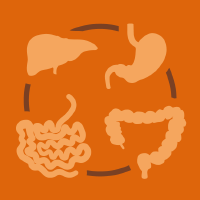Topic Menu
► Topic MenuTopic Editors


High-Throughput Analyses as a Multi-Faceted Approach for Characterizing the Human Microbiota
Topic Information
Dear Colleagues,
The advent of high-throughput technologies has significantly contributed to expanding our knowledge on the composition of the resident microbiota of different human niches, including the gut, skin, and genital tract, in health as well as disease conditions. In this regard, in recent years, the microbiota has been involved in several pathologies, such as bacterial as well as viral infections (e.g., Chlamydia trachomatis and/or HPV in the female genital tract) or chronic inflammatory conditions (e.g., diabetes, obesity, chronic atrophic gastritis or non-atrophic pangastritis). The growing body of data provided by the different approaches for microbiota investigation, such as DNA sequences from next-generation sequencing techniques, can be analyzed via several powerful computational methods to provide a comprehensive description of the bacterial composition as well as a functional characterization via the prediction of metabolic pathways. In the present topic collection, we welcome innovative articles on the interrelationship between the different microbial communities and the pathophysiology of human diseases. We are interested in full-length manuscripts based on original research, systematic reviews and/or meta-analyses, and methodological advances.
Dr. Simone Filardo
Dr. Rosa Sessa
Prof. Andrea Carolina Entrocassi
Topic Editors
Keywords
- human microbiota
- high throughput techniques
- computational analysis
- chronic diseases
- infectious diseases
Participating Journals
| Journal Name | Impact Factor | CiteScore | Launched Year | First Decision (median) | APC |
|---|---|---|---|---|---|

Gastroenterology Insights
|
0.7 | 2.7 | 2009 | 28.9 Days | CHF 1800 |

Infectious Disease Reports
|
2.4 | 6.0 | 2009 | 33.5 Days | CHF 1800 |

Life
|
3.4 | 6.0 | 2011 | 19.3 Days | CHF 2600 |

Microbiology Research
|
2.2 | 2.8 | 2010 | 20.7 Days | CHF 1600 |

Microorganisms
|
4.2 | 7.7 | 2013 | 15.2 Days | CHF 2700 |

Preprints.org is a multidisciplinary platform offering a preprint service designed to facilitate the early sharing of your research. It supports and empowers your research journey from the very beginning.
MDPI Topics is collaborating with Preprints.org and has established a direct connection between MDPI journals and the platform. Authors are encouraged to take advantage of this opportunity by posting their preprints at Preprints.org prior to publication:
- Share your research immediately: disseminate your ideas prior to publication and establish priority for your work.
- Safeguard your intellectual contribution: Protect your ideas with a time-stamped preprint that serves as proof of your research timeline.
- Boost visibility and impact: Increase the reach and influence of your research by making it accessible to a global audience.
- Gain early feedback: Receive valuable input and insights from peers before submitting to a journal.
- Ensure broad indexing: Web of Science (Preprint Citation Index), Google Scholar, Crossref, SHARE, PrePubMed, Scilit and Europe PMC.

